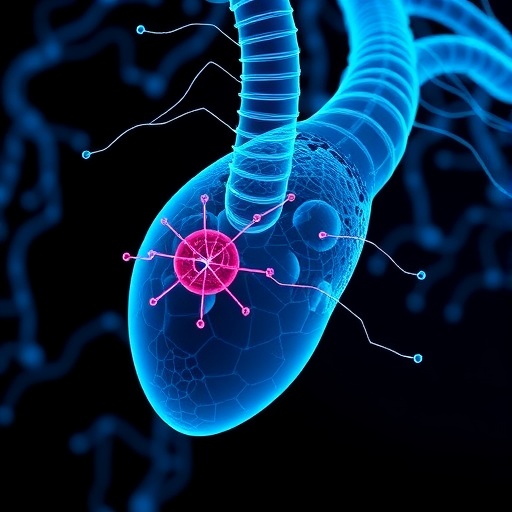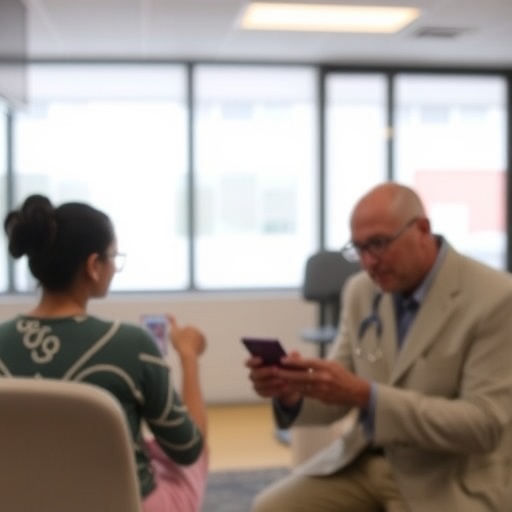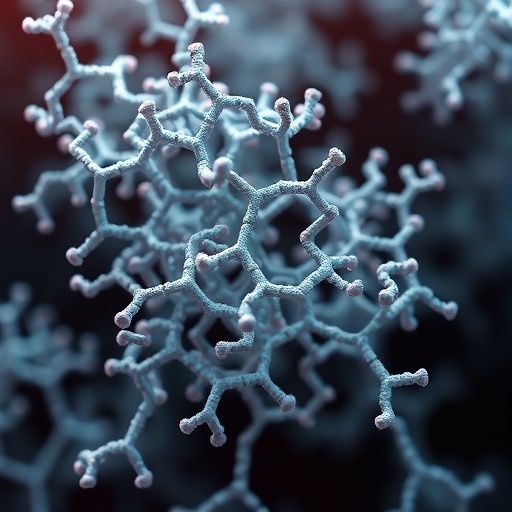In a groundbreaking study published in Nature Biomedical Engineering, researchers have developed a novel biomimetic model that aims to explore the complexities of penile dysfunctions. This innovative model seeks to replicate the intricate biological structures and mechanical properties of human penile tissue. By mimicking the physiological environment in a lab setting, the study could significantly enhance our understanding of erectile dysfunction, paving the way for improved treatment options.
Penile dysfunction affects millions of men worldwide, often leading to significant psychological and emotional distress. Current treatment methods, which include pharmacological interventions, are not universally effective and can sometimes lead to undesirable side effects. The quest for more effective solutions has made research into better preclinical models of penile function a pressing priority. The biomimetic model introduced in this study could address these challenges by providing a more accurate platform for assessing potential therapies.
The researchers, led by I. Martinier, alongside co-authors L. de Kort and P. de Graaf, meticulously designed a model that closely reflects the properties of the erectile tissue in males. Traditional animal models of penile function have limitations, often failing to simulate the exact cellular environments found in human anatomy. Hence, utilizing a biomimetic approach presents a promising alternative that could overcome these barriers in research and development.
The significance of this biomimetic model lies in its dual capability to simulate not only erectile function but also the pathological mechanisms underlying various forms of penile dysfunction. This dual focus is crucial because understanding the root causes—such as vascular issues, nerve damage, or hormonal imbalances—is essential for developing targeted therapies. By creating an environment that mirrors human tissue, researchers can better observe how different treatments affect both physiological and pathological states.
To achieve this, the model incorporates advanced materials designed to replicate the mechanical characteristics of erectile tissue. These materials behave in a manner that closely aligns with the natural elasticity and distensibility of human penile tissues. This level of realistic simulation enables researchers to test the efficacy of new drugs, surgical techniques, and device implants in a highly controlled setting, thereby accelerating the process of scientific discovery.
In addition to examining potential therapies, the model allows for the exploration of lifestyle factors that contribute to penile dysfunction, such as obesity, smoking, and diabetes. By manipulating these variables within the biomimetic environment, researchers can glean insights into how lifestyle modifications may restore erectile function. This could ultimately assist in guiding patient education and counseling on preventive measures.
The implications of this research extend beyond physiological studies. The findings could also influence sociocultural perceptions of male sexual health, steering conversations toward greater awareness and proactive management of sexual dysfunction. By demonstrating the feasibility of creating such models, the research team hopes to inspire further innovation in other areas of reproductive health.
As the model undergoes testing and validation, its creators anticipate collaborations with urologists, endocrinologists, and other specialists to ensure its practical applicability in clinical settings. Integrating insights from various fields will be crucial for refining the model and enhancing its scientific robustness.
Moreover, the research promises to foster advancements in related biomedical engineering fields, offering a template for creating biomimetic models of other organs and systems. Potential applications could range from heart health to diabetes-related complications, suggesting a wider impact on healthcare research and technology development.
While the current study marks a significant milestone, it is just the beginning. The research team recognizes the need for further studies to validate the model’s predictive capabilities and long-term efficacy. This ongoing work emphasizes the importance of meticulous peer review and collaboration, which are hallmarks of robust scientific inquiry.
In conclusion, the development of a biomimetic model to study penile dysfunctions represents a remarkable leap forward in the quest for understanding and treating one of the most common male health issues. As researchers continue to refine and validate this model, the potential benefits for millions of men worldwide are substantial. More importantly, this research lays the groundwork for future innovations in the realm of sexual health, thereby encouraging a cultural shift towards open discussions about male sexual wellness.
Ultimately, this pioneering approach not only aims to improve the quality of life for those affected by penile dysfunction but also contributes to the broader goal of advancing health technology through interdisciplinary research. With the right focus and collaboration, the biomimetic model has the potential to transform current paradigms of care and treatment in urology.
Subject of Research: Biomimetic model to study penile dysfunctions
Article Title: Biomimetic model to study penile dysfunctions
Article References:
Martinier, I., de Kort, L. & de Graaf, P. Biomimetic model to study penile dysfunctions.
Nat. Biomed. Eng 9, 1175–1176 (2025). https://doi.org/10.1038/s41551-025-01434-4
Image Credits: AI Generated
DOI: 10.1038/s41551-025-01434-4
Keywords: Penile dysfunction, biomimetic model, erectile tissue, male sexual health, biomedical engineering, treatment, preclinical model, lifestyle factors.
Tags: biomimetic approaches in biomedical engineeringbiomimetic model for erectile dysfunctionenhancing understanding of male sexual healtherectile tissue mechanical propertieshuman tissue engineering in medicineimproving erectile dysfunction therapiesinnovative treatments for erectile dysfunctionlimitations of traditional animal modelsNature Biomedical Engineering study findingspenile dysfunction research advancementspreclinical models of penile functionpsychological impact of penile dysfunction





